Why you can trust TechRadar
We spend hours testing every product or service we review, so you can be sure you’re buying the best. Find out more about how we test.
Hisense C2 Ultra review: Two-minute review
The Hisense C2 Ultra is an impressive 4K projector that delivers sensational visuals, boasts impressive sound output and features a user-friendly operating system that provides access to the best streaming services. While it requires mains power, it’s small and light enough to be considered portable, which means not only can it be considered one of the best 4K projectors, but one of the best portable projectors too.
Key to the C2 Ultra’s success in projecting excellent images is its triple-laser projection system, which combines red, blue and green light sources. This system can not only go incredibly bright – Hisense says it’s rated for a peak brightness of 3000 ANSI lumens – but also covers a wide color spectrum, 110% of the BT.2020 color space, to be precise. Dolby Vision, HDR10+, HDR10 and HLG HDR formats are all supported, and it’s IMAX Enhanced.
The results are outstanding, with content appearing vibrant and punchy, and contrast levels are good too, giving images great depth. It’s not only in bright, colorful scenes where the C2 Ultra excels though, as it also serves up deep blacks and is more than capable where shadow detail is concerned. If you were ever of the notion that a projector still isn’t a genuinely viable alternative to a TV, particularly outside of home movie nights, then the Hisense C2 Ultra bucks that trend in a big way.
What took me most by surprise upon my first use of the C2 Ultra was the audio performance from the built-in 2.1 channel speaker system tuned by JBL. I had the unit set up in my spare bedroom on a stand, just to the right of the bed and my viewing position. When I was watching movies, the sound appeared to be coming from the opposite wall and not blasting straight in my ears as I had expected, resulting in a much more immersive experience. The speaker system can go loud while still retaining a good amount of detail. Dialog comes through clearly, while the subwoofer can go low, which helps a lot during high-octane scenes such as explosions or rumbling car engines.
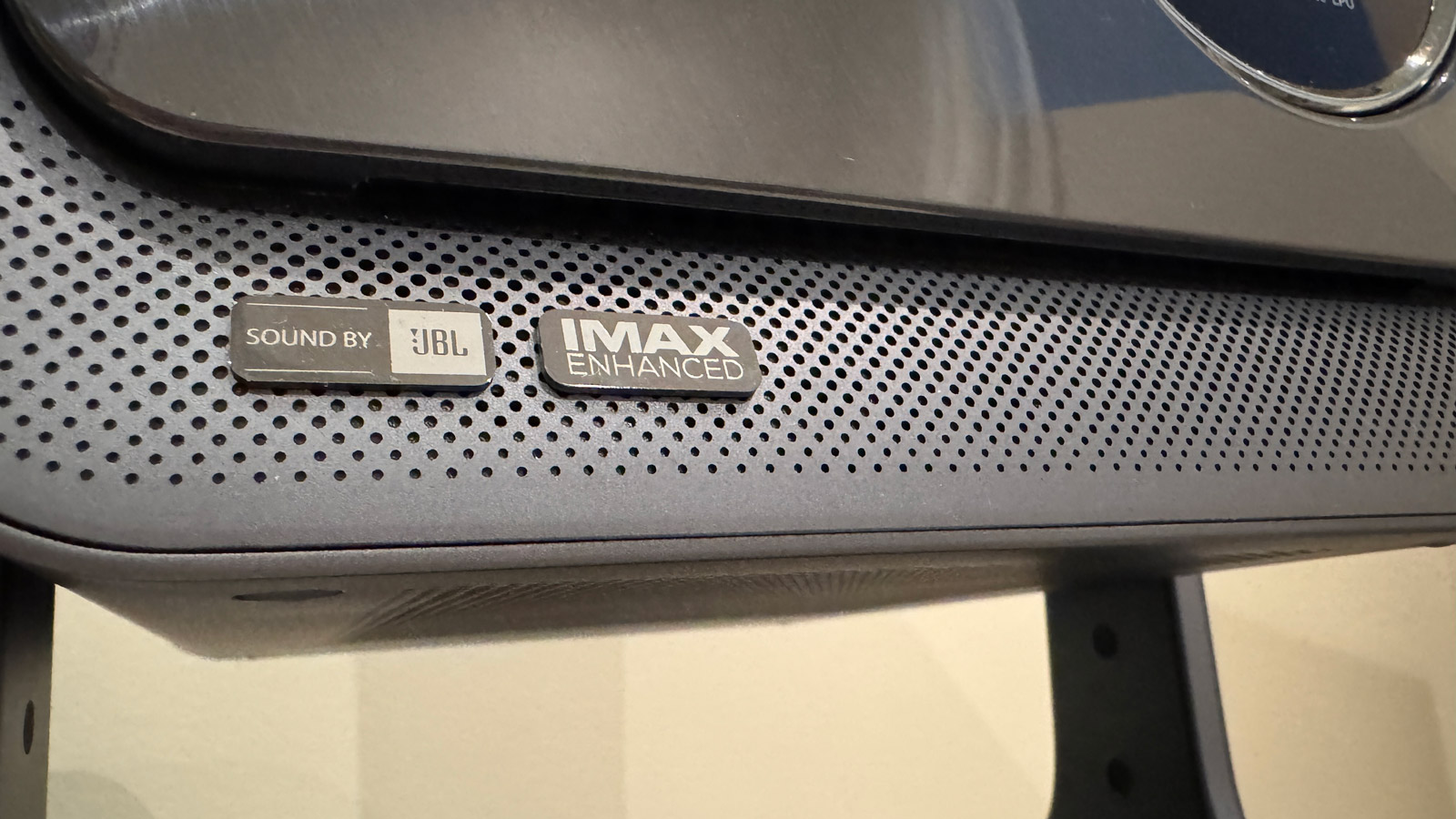
I think it’s a good-looking unit too and one that’s impeccably built. The main projector housing can not only be moved around a full 360º to suit your specific viewing position, but it can also move upwards to a maximum of 135º to project images onto higher surfaces.
The C2 Ultra’s Vidaa OS is by far the most accomplished projector operating system I’ve personally come across. Not only is it intuitive to use right out of the box, but it also provides access to virtually all of the main streaming apps you’re likely to want. Android-based projector systems can often fall foul of not offering such wide support and often require workarounds to get some of the more popular apps. Hisense’s OS also offers a number of picture adjustment settings to help you achieve the best overall image.
Finally, it’s a great option for gamers. Not only is it ‘Designed for Xbox’ certified, but it features a 240Hz gaming mode to help with particularly fast-paced gaming action.
Its list price may initially make you think it’s expensive, but considering its capabilities rival most TVs and the fact it can project an image up to 300 inches in size, then it suddenly presents itself as a certified bargain.
Hisense C2 Ultra review: Price & availability
- Release date: October 2024 (March 2025 in Australia)
- Price: $2,999 / £2,499 / AU$4,499
- Can already be found with discounts
The Hisense C2 Ultra was announced in October 2024 and went on sale in the US and UK at the same time, but didn’t arrive in Australia until March 2025. At launch, it was listed at $2,999.99 in the US, £2,499 in the UK and AU$4,499 in Australia.
However, it’s already received discounts worldwide, so you can now feasibly expect to pay around $2,499 / £2,299 / AU$3,999. I’ve also spotted select retailers offering the option of a free projector screen with the purchase of a shiny new C2 Ultra, should you wish to go down the ‘full’ home cinema route.
The C2 Ultra is more expensive than two of our favorite portable 4K projectors, the BenQ GP520 and Anker Nebula Cosmos Laser 4K. However, the Hisense machine is objectively brighter than either of its competitors, offers greater gaming and HDR support and is more forgiving in where it’s positioned thanks to its gimbal design.
Hisense C2 Ultra review: Design & features
- Semi-portable design
- Excellent Vidaa OS software
- Good selection of connections
The Hisense C2 Ultra is the replacement model to the C1, but you would only really know that based on the model number. Design-wise, the two projectors are worlds apart. Where the Hisense C1 was a boxy affair, the C2 Ultra is much sleeker with rounded corners and a circular base that plays home to the speaker system’s subwoofer.
The main projection unit is mounted onto a gimbal stand that allows you to move and tilt it in virtually any direction you wish. Hisense says it can tilt up to a 135º angle, but technically it can swing to a full 180º and still project an image. I can only assume the company doesn’t expect owners to want to look directly above them to view content, with the 135º angle being more comfortable.

It is a portable projector, although the term portable should be used loosely. Not only does the C2 Ultra rely solely on mains power to work (the cord integrates a power brick too), it is still quite a sizable unit. At least, it’s sizable when compared to truly portable lifestyle projectors such as the Xgimi MoGo 3 Pro and Samsung The Freestyle, which both adopt a much smaller, cylindrical design that allows them to be slipped into a bag.
The main projector housing measures 9.7 x 7.1 x 9.7 inches (24.7 x 18.3 x 24.7 cm), but with the stand included, the total height increases to 11.3 inches (28.6cm). And coming in at a relatively lightweight 6.3kg, I can’t see many people having too much issue moving it around.
The whole unit is finished in a gun-metal gray color that shines pleasantly in the light. It features a number of ventilation panels on the front, sides and underside, while a large grille dominates the rear of the unit to help ensure everything remains cool when the projector is in use. The ventilation system certainly works as I noticed barely a murmur from the fans during use.
Sitting above the rear ventilation grille is a series of connections, including two HDMI 2.1 ports, one of which supports an Auto Low Latency Mode (ALLM) and eARC for connecting to an external soundbar or home theater system. The other can be used to connect, say, a media streaming device. You’ll also find 2x USB-A 3.0 inputs, a 3.5mm audio out and a digital optical audio out, along with an Ethernet port for a more stable, wired internet connection. However, thanks to Wi-Fi 6E support, I never had any major issues streaming wirelessly.
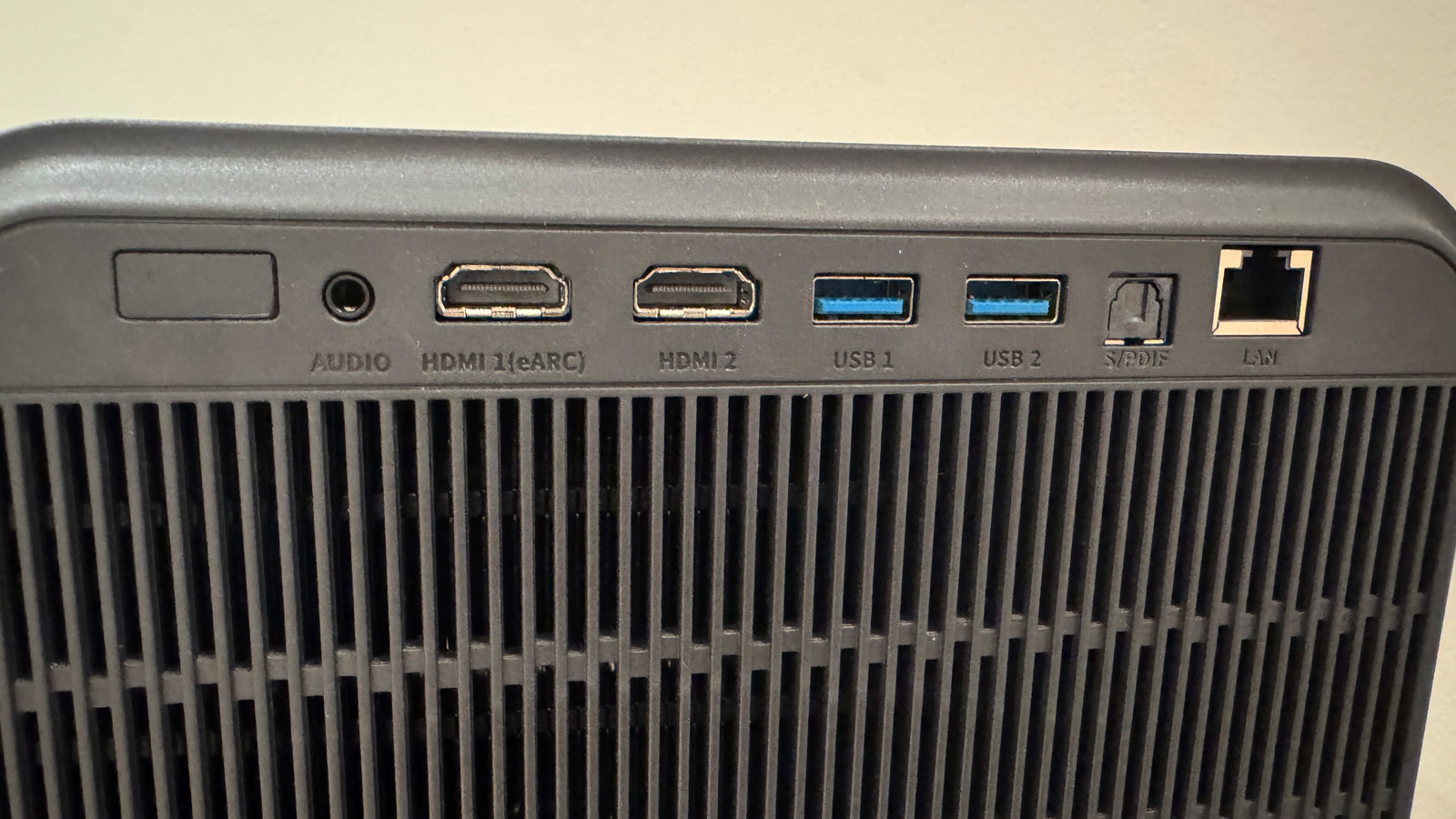
On the front is where the true magic happens. The projector lens is protected by a thin layer of what I presume to be glass, helping to prevent the lens itself getting covered in dust and debris. You will still, however, likely want to give this protective layer the occasional wipe to keep it clean – there’s no motorized cover as you’ll find on the likes of the Xgimi Aura 2.
There are also a few sensors to aid with autofocusing and to facilitate an eye-protection feature that will automatically switch the light off when it detects someone in front of it to prevent it shining into their eyes. It’s incredibly sensitive, which you may or may not think is a good thing. I ultimately left it turned off during my testing and made a conscious effort to not look into the light whenever I walked past it.

One of the standout features of the lens is its optical zoom capability, which promises to retain image quality if you zoom in or out – making the image smaller or larger – without needing to move the main unit. If you have the projector set up at a far distance opposite your projection surface, for example, which would naturally cause the image to be large, you can zoom in to decrease the size while not affecting the quality.
For the most part, I imagine the majority of owners will simply rely on the autofocus and auto-keystone adjustment settings (and potentially the manual adjustment settings) to get the best picture. I was projecting onto a white wall but, whenever I ran the auto keystone adjustment, the results were less than satisfactory. The image was totally skewed, meaning I had to go into the manual four-point adjustment settings to fix things up. I would like to believe that the same issue wouldn’t occur if you’re projecting onto a dedicated screen, but I didn’t have one to test this out.
Hisense’s Vidaa OS is used on the C2 Ultra, which I found to be exceptional. It was also a pleasant surprise, considering the company’s own, rather excellent PX3-Pro uses the Google TV OS instead. The home page is clearly laid out, albeit chock full of ads, and all the major streaming apps are supported, along with a plethora of others for those who wish to seek out less-mainstream content.

The Hisense C2 Ultra has impressive high dynamic range support, including Dolby Vision, HDR10+, HDR10, HLG and IMAX Enhanced. It also supports 3D images and audio, but you’ll need optional 3D eyewear to take advantage.
Full control of the C2 Ultra is done via the remote control. The previous C1 did have onboard buttons, but they’ve seemingly been dropped this time around. The remote is a good one, boasting a satisfying weight and premium feel. Buttons are clearly laid out, although I would have preferred the settings button to feature the more widely used cog icon, as opposed to what could be mistaken for a shopping list. It supports voice control and features quick keys for Netflix, YouTube, Prime Video and Disney+.
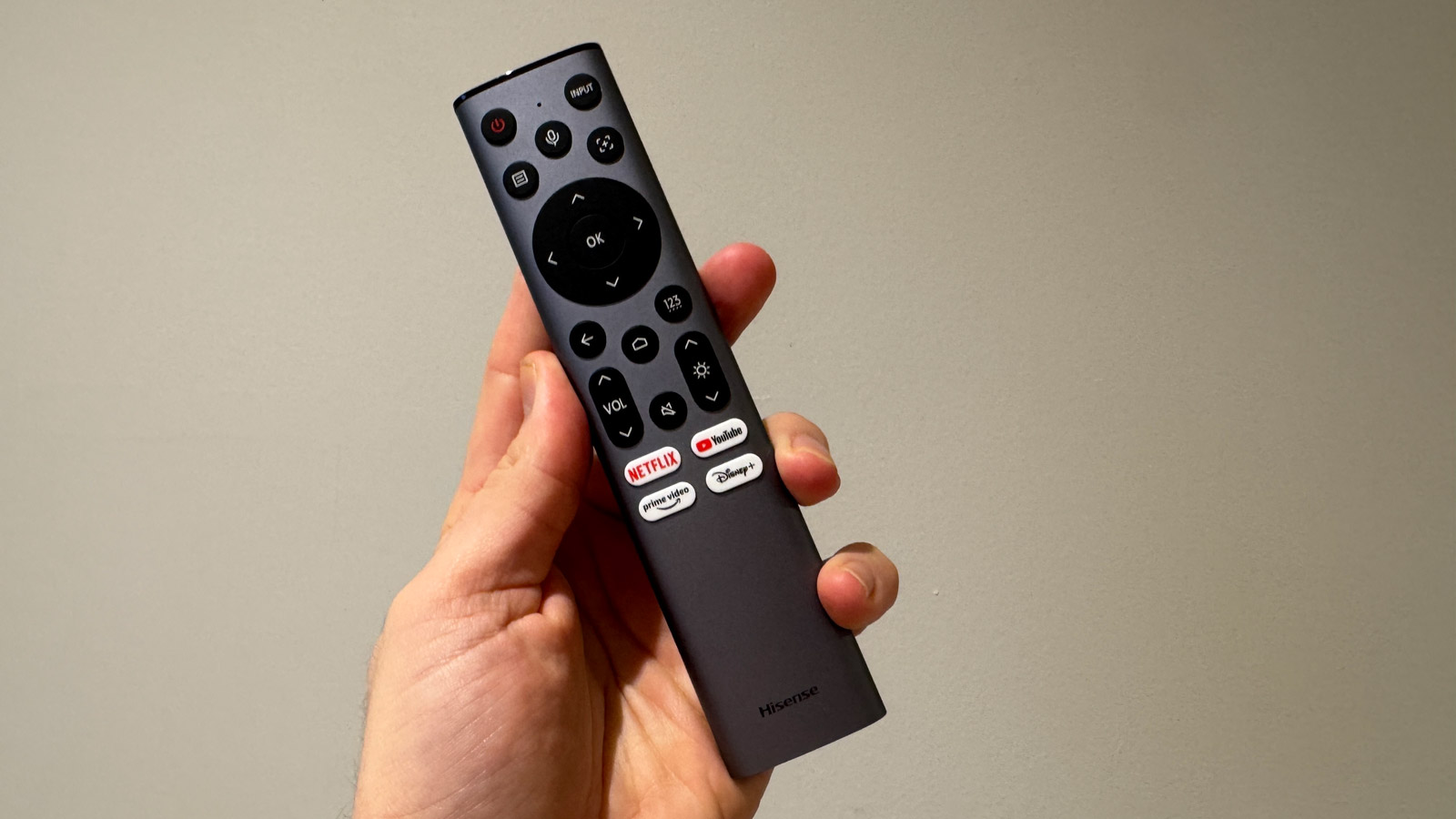
- Design & features score: 5/5
Hisense C2 Ultra review: Picture & sound quality
- Excellent color and brightness
- Comprehensive HDR support and 240Hz mode for gamers
- Superb sound output
The Hisense C2 Ultra produces fantastic images from its tri-color laser projection system that will not only give you a true home cinema experience, but which can comfortably rival many of the best TVs to make it your sole media viewing device.
Despite it claiming a peak brightness of 3,000 lumens, it naturally performs at its absolute best when the room is as dark as possible, but I found that even with some ambient light coming into my test room, I was still able to watch unaffected.
I even turned the overhead lights on to see how it fared, and while color and contrast took an obvious knock, the image was still bright enough for me to be able to watch. I wouldn’t expect many people to use the C2 Ultra in such bright conditions, but it’s good to know it is truly capable of holding its own against pesky light.

The C2 Ultra’s vast array of HDR support options makes recently released movies such as Godzilla x Kong: The New Empire and even older, remastered movies such as Blade look fantastic in Dolby Vision, as well as TV shows such as Fallout in HDR10+. It will even support IMAX Enhanced content from Disney+, but I wasn’t able to test this since I don’t have a subscription – the price increases became too much to justify!
I was especially impressed with animated movies – the triple-laser system in combination with the C2 Ultra’s wide color support meant they were presented with outstanding color. I should note that the images included with this review don’t quite do the picture quality justice – you have to see it in reality to be impressed. The images are plagued by a peculiar pink hue that’s definitely not present in the image projected onto the wall.
The C2 Ultra supports screen sizes from 65 to 300 inches and I managed approximately an 80-inch image for my testing. The larger the image gets, the higher the likelihood of a drop in picture quality. This is where the optical zoom can come into play, allowing you to make easy adjustments rather than having to physically move the whole unit closer to the screen or rely on digital zoom, which can often not yield good results.
Gamers also have reasons to get excited about the C2 Ultra as it features a dedicated game mode to help lower input lag, and it can enable a 2K/240Hz mode for super-smooth gameplay. It’s also ‘Designed for Xbox’ – the world’s first mini projector to lay claim to the title, says Hisense – meaning it will automatically apply optimum settings regardless of game genre when it detects a signal from an Xbox console.
I don’t own an Xbox, so I couldn’t test this, but I was able to enjoy smooth gameplay from my PS5, with the fast movements of Spider-Man 2 being handled with expert authority.
Audio performance is another highlight in the C2 Ultra’s repertoire. Its 2.1 channel JBL system kicks out a surprising amount of bass, vocal clarity and immersion, aided by the fact it supports Dolby Atmos and DTS Virtual:X 3D sound formats. If the content you’re watching is encoded with Dolby Atmos, then you won’t get a true reproduction, owing to the lack of physical channels, but the performance is better than what I’ve heard from many TVs. Just note, while I was certainly impressed with the overall performance considering the projector’s size, it’s not the widest soundstage, nor is there a genuine sense of height – compared to other projectors I’ve tested, however, it comes out on top.
Of course, owners wanting a more authentic home cinema experience will want to add a fully-fledged theater system or one of the best soundbars, but casual users should find little to fault.
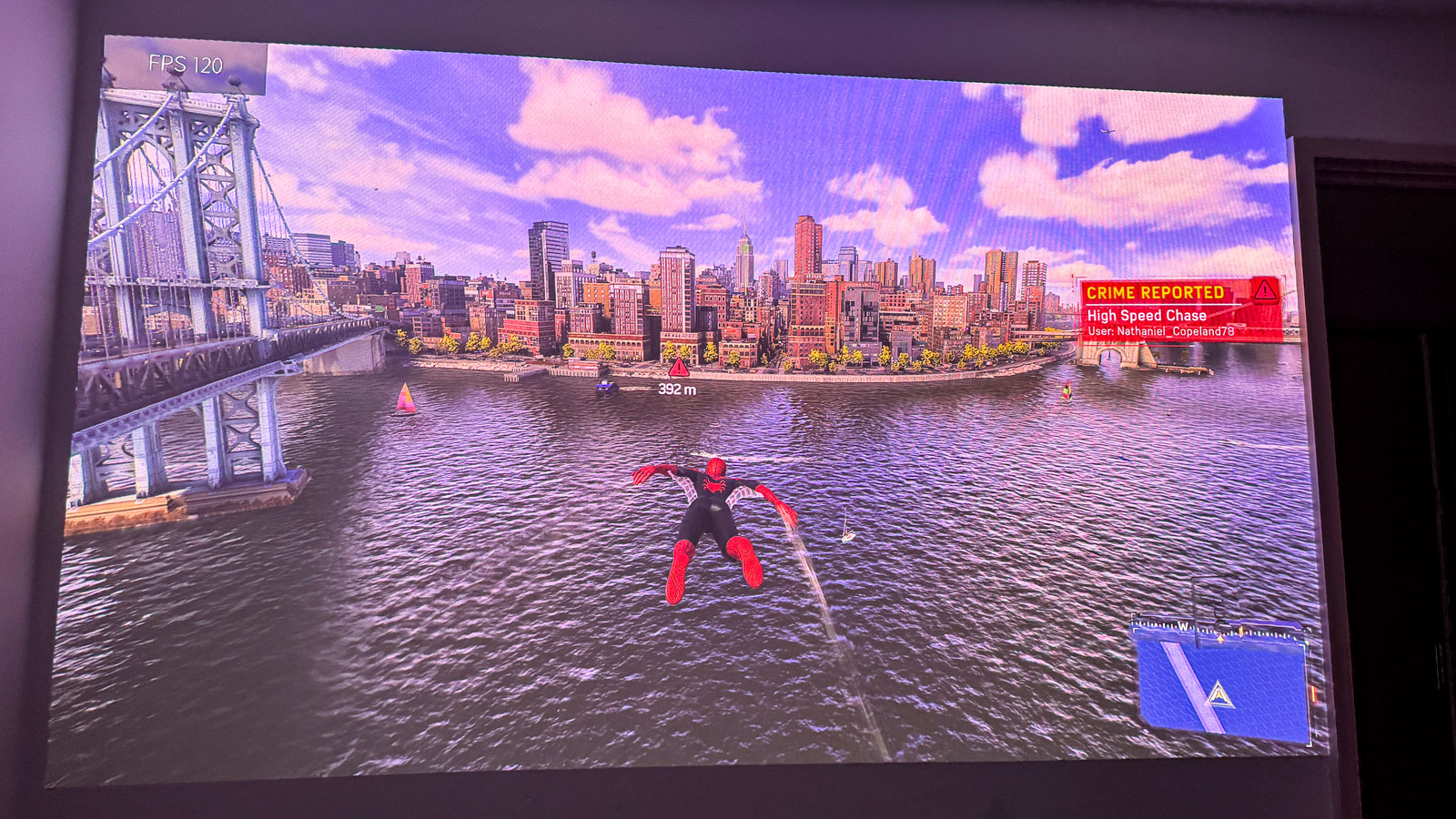
- Picture & sound quality score: 4.5/5
Hisense C2 Ultra review: Value
- Versatile with placement
- Pricey, but packed with features
The Hisense C2 Ultra isn’t the most affordable projector at $2,999 / £2,499 / AU$4,499, but given the fact I’ve already seen it come down in price since launch, I think it makes for a compelling investment. It’s more affordable than Hisense’s own PX3-Pro, although that projector has the benefit of being an ultra-short throw model, potentially making it easier to place in your room.
However, given the C2 Ultra’s default, relatively short 0.9:1 throw ratio, you can get a decently large image from a short distance. Plus, the fact it has an optical zoom and a wealth of picture adjustment settings should make it easy for anyone to set up in their room.
Then factor in its comprehensive HDR support, truly stunning images, impressive audio delivery and an intuitive interface, and there’s no doubt that it’s not only a remarkable projector, but a worthy rival to TVs.
Should you buy the Hisense C2 Ultra?
Attribute | Notes | Rating |
|---|---|---|
Design & features: | A good-looking package that’s brimming with useful features, connections and a great OS. | 5/5 |
Picture & sound quality: | Bright, colorful images make it usable in virtually any lighting condition, and the built-in sound system is better than most TV speakers. | 4.5/5 |
Value: | Not quite impulse-buy price, but ticks all the boxes where picture quality, features and versatility are concerned. | 4.5/5 |
Buy it if…
Don’t buy it if…
Also consider
| Header Cell – Column 0 | Hisense C2 Ultra | BenQ GP520 | LG CineBeam Q |
|---|---|---|---|
Price: | $2,999 / £2,499 / AU$4,499 | $1,499 / £1299 / AU$ 2,199 | $1,299 / £1,299 / AU$2,499 |
Screen sizes supported: | 65-300 inches | 50-180 inches | 50-120 inches |
Brightness (specified) | 3,000 ANSI lumens | 2,600 lumens | 500 ANSI lumens |
HDR support: | Dolby Vision, HDR10+, HDR10, HLG | HDR10+, HLG | HDR10, HLG |
Display technology: | RGB laser DLP | LED DLP | RGB laser DLP |
Resolution: | 4K (3,840 x 2,160) | 4K (3,840 x 2,160) | 4K (3,840 x 2,160) |
Connections | 2x HDMI 2.1 (1 with eARC), 2x USB-A, 1x S/PDIF, Ethernet, 1x 3.5mm, Bluetooth 5.3 | 2x HDMI 2.1 (1 with eARC), 1x USB-C (DP Out, DP In, 2x USB-A 1x 3.5mm | HDMI, USB-C (display, power) |
How I tested the Hisense C2 Ultra
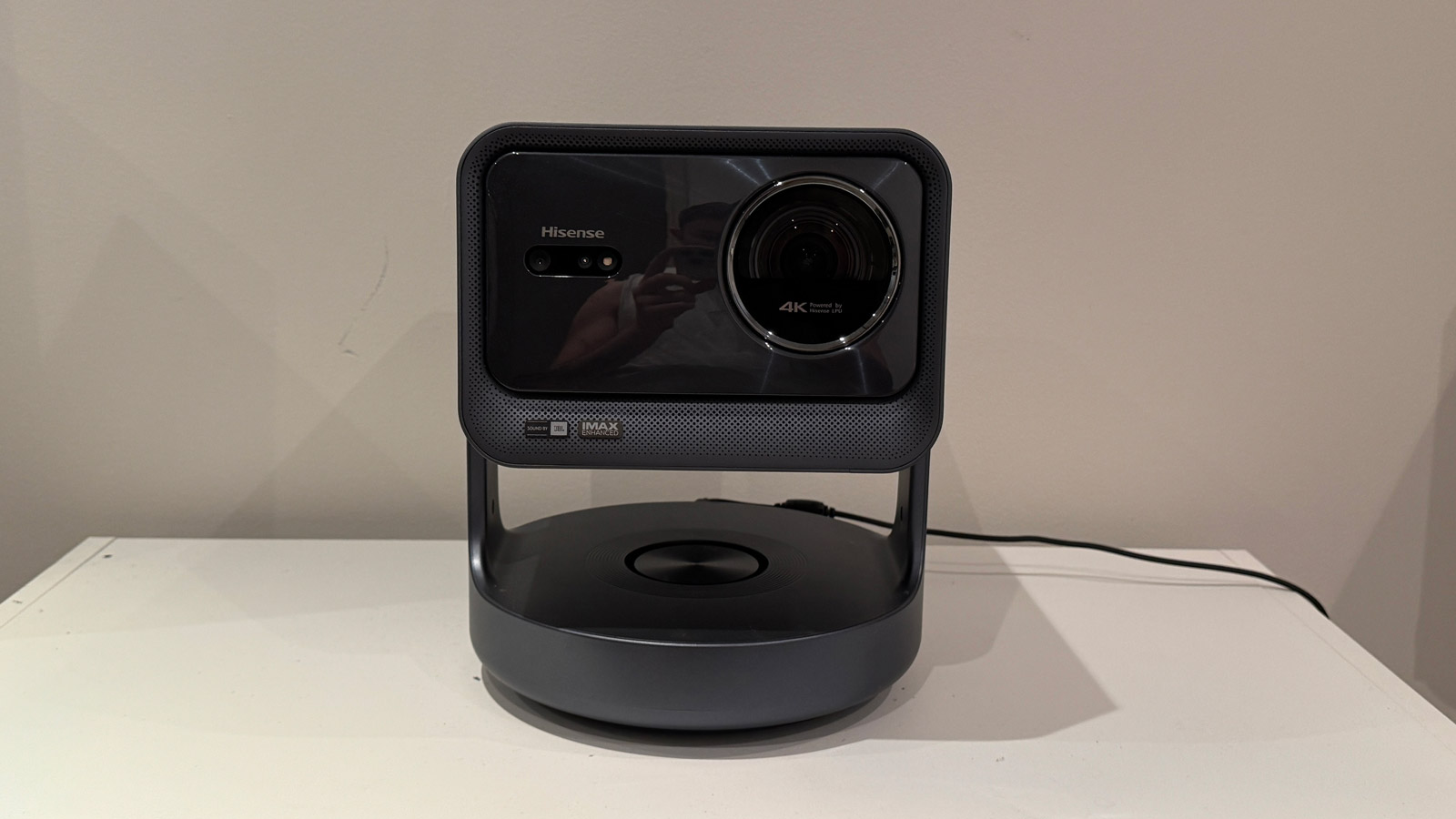
- Tested at home in a variety of real-world viewing conditions
- Watched a variety of content including streaming and 4K Blu-ray
I tested the Hisense C2 Ultra at home in a variety of real-world conditions, which saw it being faced with in-room lighting, natural light coming into the room and with no light at all. It was tested against a bare white wall for the duration of the review period, with an 80-inch image being achieved. I also tested the optical zoom function to see if and how it affected image quality.
I watched a range of 4K HDR and HD content from built-in streaming services, as well as using the 4K Blu-ray player in the PS5.
First reviewed May 2025






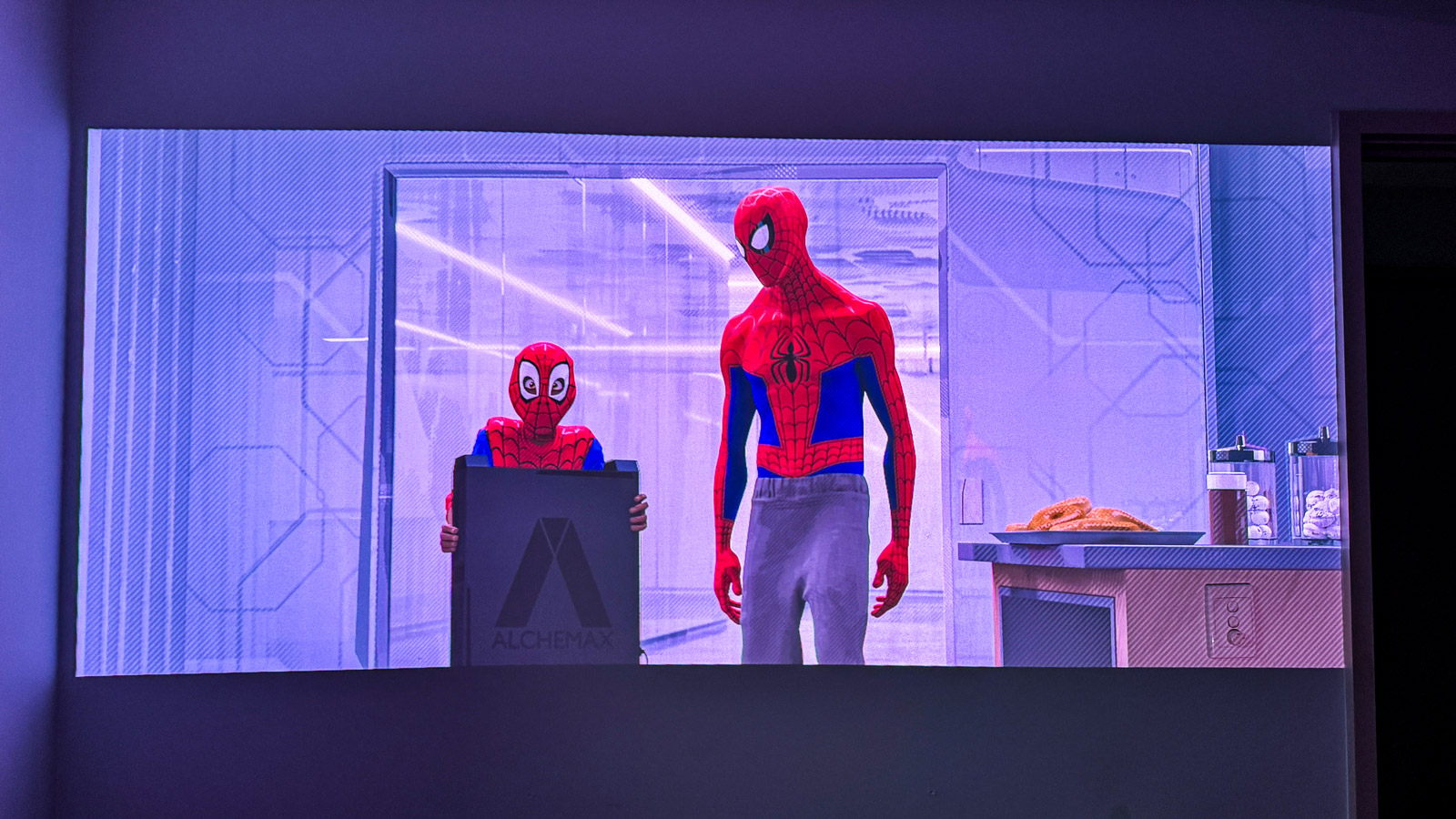





Leave a Comment
Your email address will not be published. Required fields are marked *